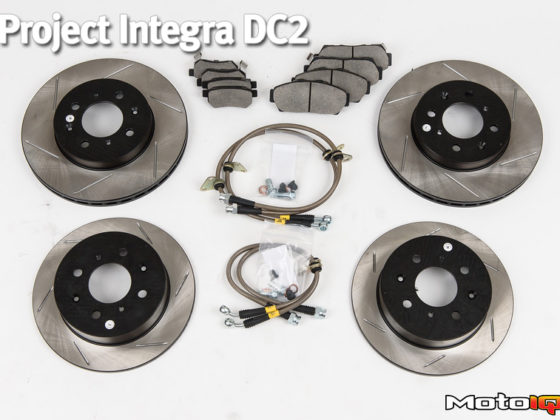,
 Enough patting ourselves on the back for getting the fronts done, off to the back we go. Due to the integrated parking brake, the rear brakes are a little more complicated, but by no means difficult to do. First things first, ensure your parking brake is off. This is a good time to point out we had the car on four jackstands, so it wasn't going anywhere.
Enough patting ourselves on the back for getting the fronts done, off to the back we go. Due to the integrated parking brake, the rear brakes are a little more complicated, but by no means difficult to do. First things first, ensure your parking brake is off. This is a good time to point out we had the car on four jackstands, so it wasn't going anywhere. There are two nuts on the backside of the caliper and the one pictured here that was removed, has to be removed, totes obvi yo.
There are two nuts on the backside of the caliper and the one pictured here that was removed, has to be removed, totes obvi yo. Insert the appropriately sized hex wrench into the hole and turn the fitting inside counter-clockwise. This is the self adjuster for the parking brake and backs off the pads from the rotor, allowing the caliper to be removed. You'll need to tighten this after the new rotor and pads are in place, so leave the hole open.
Insert the appropriately sized hex wrench into the hole and turn the fitting inside counter-clockwise. This is the self adjuster for the parking brake and backs off the pads from the rotor, allowing the caliper to be removed. You'll need to tighten this after the new rotor and pads are in place, so leave the hole open. Next this plastic cap has to be removed. The bolt underneath this allows for the brake pads to be replaced. Word of advice, getting this cap on later can be tough, but a little lube (I used dishwashing liquid) helps it pop on much more easily.
Next this plastic cap has to be removed. The bolt underneath this allows for the brake pads to be replaced. Word of advice, getting this cap on later can be tough, but a little lube (I used dishwashing liquid) helps it pop on much more easily. This bolt looked frighteningly rusty, but came out with ease. I don't know how it's possible, but this car has never had a bolt that was frozen in place due to rust. For this, I am ever so grateful and I probably have cursed myself for bringing it up when I get to work on other areas of the car.
This bolt looked frighteningly rusty, but came out with ease. I don't know how it's possible, but this car has never had a bolt that was frozen in place due to rust. For this, I am ever so grateful and I probably have cursed myself for bringing it up when I get to work on other areas of the car. The parking brake cable needs this hold-down removed. On the passenger side it's hidden behind a plastic panel that comes off with some annoying clips.
The parking brake cable needs this hold-down removed. On the passenger side it's hidden behind a plastic panel that comes off with some annoying clips. Then it's time for the caliper to be removed with the two mounting bolts, just like the front. The rotor again was seized to the hub face, but using the same bolt trick got everything off.
Then it's time for the caliper to be removed with the two mounting bolts, just like the front. The rotor again was seized to the hub face, but using the same bolt trick got everything off.


